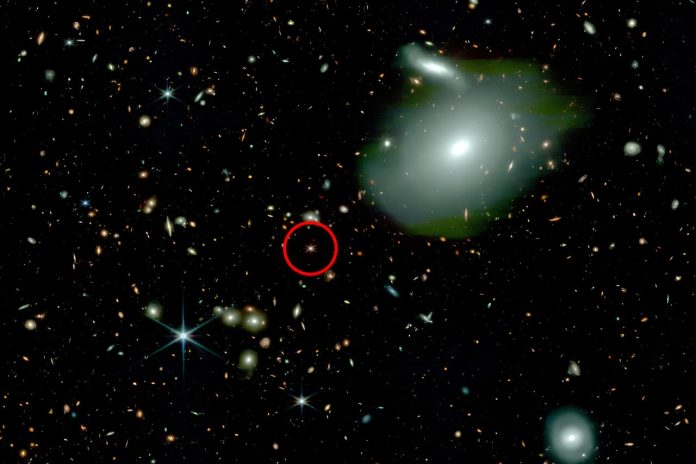
Astronomers have made a surprising discovery: some of the earliest and brightest quasars in the universe appear to be “lonely” and isolated in space.
Quasars are extremely luminous objects powered by supermassive black holes at the center of galaxies.
These objects, formed just a few hundred million years after the Big Bang, have puzzled scientists because of their massive size and brightness, which seems too extreme for such an early stage of the universe.
In a new study led by researchers at MIT, astronomers used NASA’s James Webb Space Telescope (JWST) to look back over 13 billion years into the past and observe the environments around five ancient quasars.
What they found was surprising: while some quasars are surrounded by crowded neighborhoods with more than 50 nearby galaxies, others appear to exist in near-empty regions of space, with only a few galaxies around them.
This finding challenges current scientific theories about how quasars form and grow in the early universe.
Previously, scientists believed that quasars grew in dense regions of space with a lot of surrounding material that fed the black holes at their centers. These dense environments would also have created many smaller galaxies nearby.
However, the new observations show that some quasars exist in more isolated regions, raising questions about how they managed to grow so large without a rich supply of material around them.
The study, published in The Astrophysical Journal, was led by Anna-Christina Eilers, an assistant professor of physics at MIT.
She and her team used JWST to observe five of the oldest quasars ever seen, which formed 600 to 700 million years after the Big Bang. These quasars are powered by supermassive black holes that are a billion times more massive than our sun and more than a trillion times brighter.
“It’s amazing that we now have a telescope capable of capturing light from 13 billion years ago in such detail,” said Eilers. “For the first time, JWST allowed us to study the environments where these quasars formed.”
Between August 2022 and June 2023, the team used JWST to take detailed images of the space surrounding each quasar.
They expected to find dense fields filled with galaxies, but instead, they found a surprising range of environments. Some quasars were indeed in crowded regions, but others were surrounded by just a few galaxies.
This variation in quasar environments challenges the current understanding of black hole growth and galaxy formation. According to scientists, the early universe was shaped by a “cosmic web” of dark matter—an invisible form of matter that interacts with gravity. This web created dense regions where matter collected, leading to the formation of galaxies and quasars.
In theory, quasars should have formed in these densest regions, surrounded by many other galaxies.
However, the discovery of “lonely” quasars suggests that something else may be at play. If these quasars formed in relatively empty regions with little dark matter and fewer galaxies, how did they grow so large and bright so quickly?
“It’s difficult to explain how these quasars could have grown so big if they appear to have nothing to feed from,” Eilers said.
One possible explanation is that the quasars may not be as isolated as they seem. Some galaxies around them might be hidden by thick clouds of cosmic dust, making them invisible to current telescopes. Eilers and her team plan to conduct more observations to see if they can detect hidden galaxies and better understand how these quasars grew.
The team’s discovery raises new questions about the origins of supermassive black holes and how they grow.
Scientists estimate that quasars would have had to grow rapidly to reach their massive sizes within the first billion years of the universe. Yet, if there wasn’t enough material around for some quasars to grow continuously, there must be another mechanism for their growth that scientists have not yet identified.
“Our findings show that there’s still a missing piece of the puzzle when it comes to understanding how supermassive black holes grow,” said Eilers. “There must be some other way that they can grow, and we still need to figure out what that is.”
This discovery opens new avenues of research into the formation of galaxies and black holes, helping astronomers better understand the early history of the universe.



